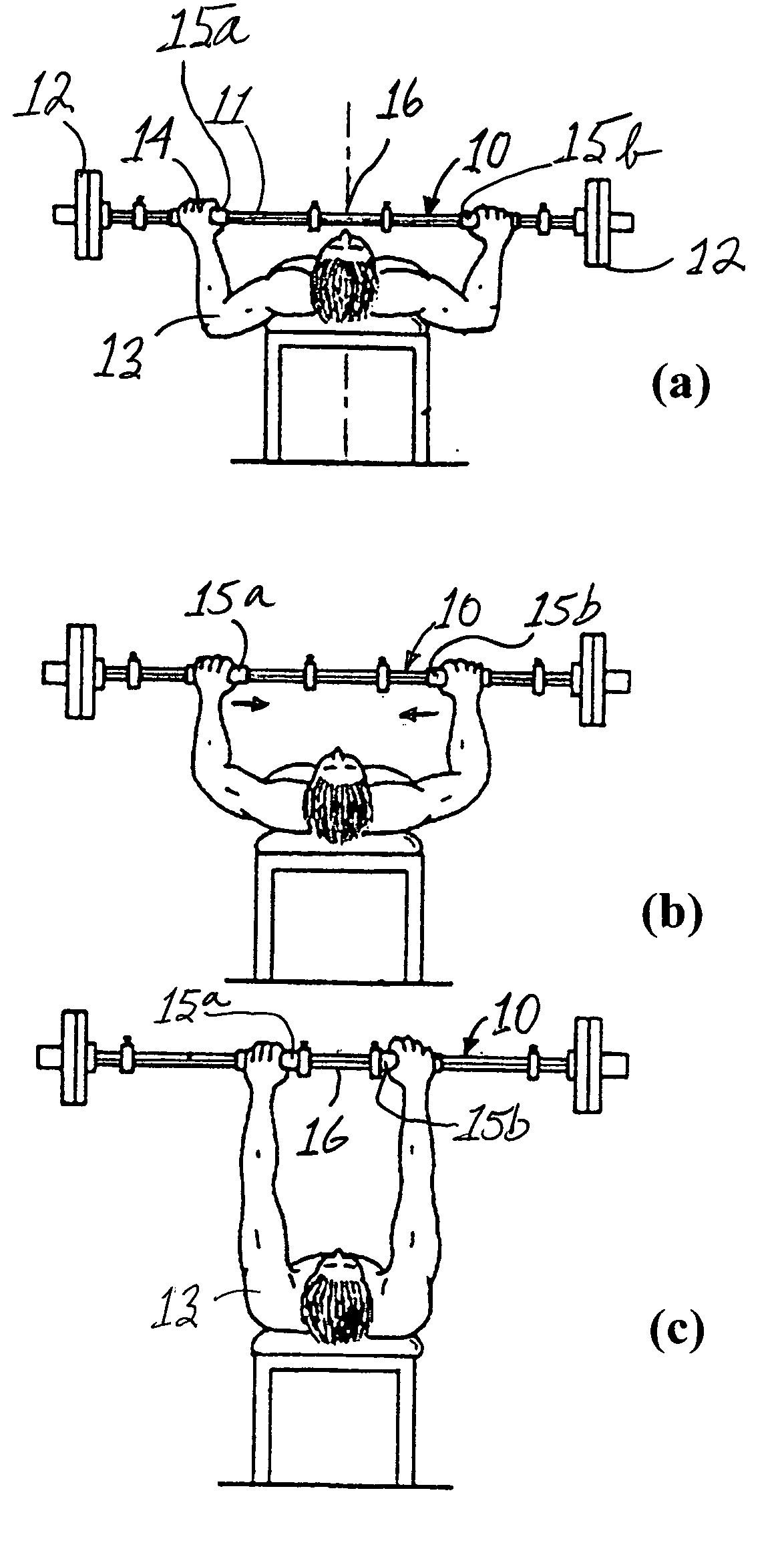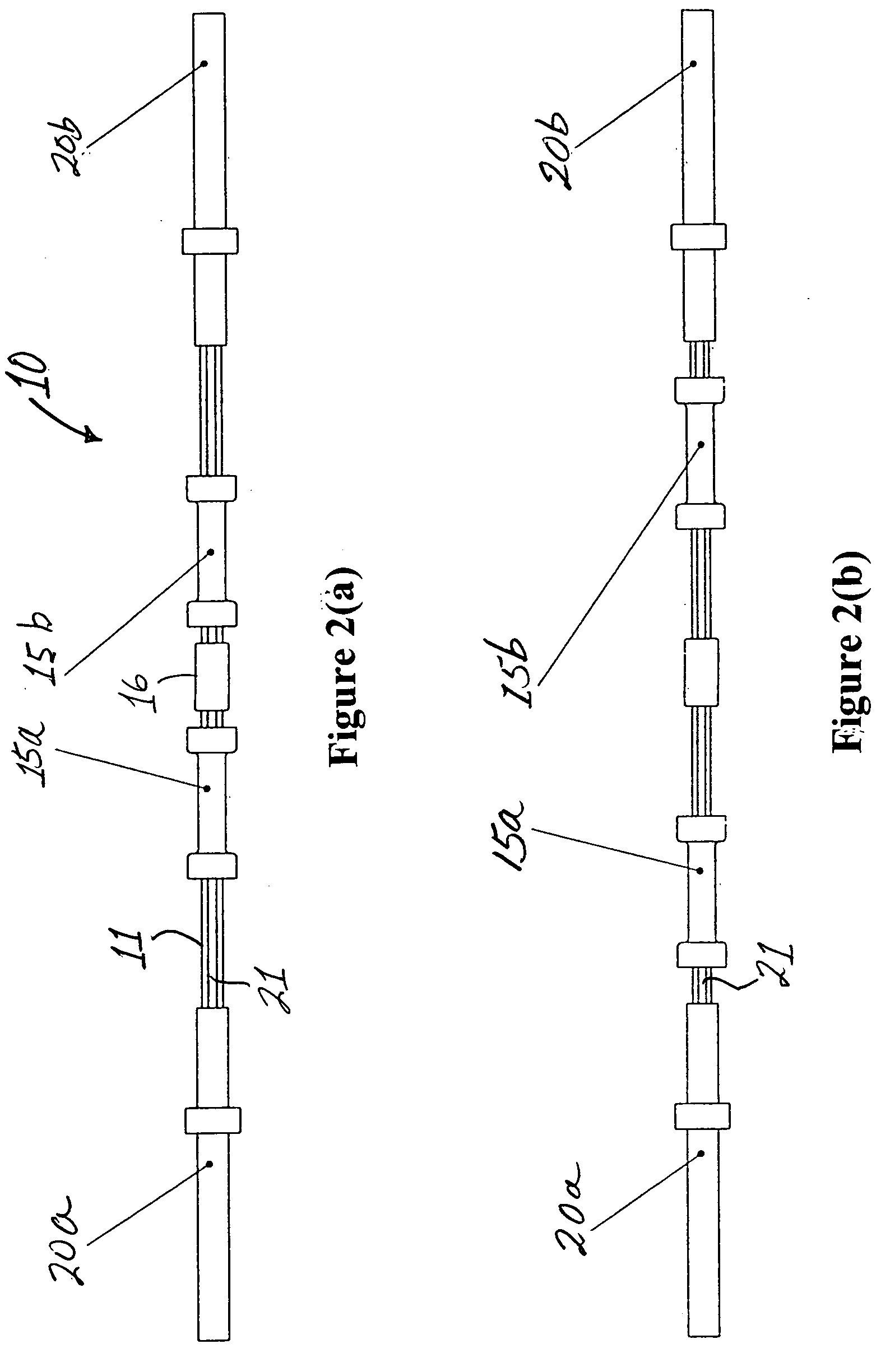Bar with sliding handgrips for resistance exercise devices
a resistance exercise and bar technology, applied in the direction of weights, frictional force resistors, gymnastics, etc., can solve the problems of high profile, unfavorable use of oval bars, and unbalance of dibrowski devices, so as to reduce joint stress and strain, increase range of motion, and exercise more muscle fibers
- Summary
- Abstract
- Description
- Claims
- Application Information
AI Technical Summary
Benefits of technology
Problems solved by technology
Method used
Image
Examples
Embodiment Construction
[0052] The present invention provides an exercise apparatus for performing two-handed exercises and includes a bar to which a resistive force is applied and a pair of handgrip assemblies concentrically and slidably attached to the bar which the user grips in order to move the bar against the resistive force during the performance of an exercise. The resistive force may be simply the weight of the bar or it may comprise weights connected to the bar. Alternatively, another piece of equipment capable of providing a resistive force can be connected to the bar by resistive force attachment means such as, for example, by a cable or two “U”bolts. Each handgrip is slidably connected to the bar, the sliding paths being generally parallel to the long axis of the bar, generally in line with each other, and disposed symmetrically with respect to a center plane perpendicular to the long axis of the bar and intersecting the bar at the center of gravity thereof. (The terms “generally parallel” and...
PUM
 Login to View More
Login to View More Abstract
Description
Claims
Application Information
 Login to View More
Login to View More - R&D
- Intellectual Property
- Life Sciences
- Materials
- Tech Scout
- Unparalleled Data Quality
- Higher Quality Content
- 60% Fewer Hallucinations
Browse by: Latest US Patents, China's latest patents, Technical Efficacy Thesaurus, Application Domain, Technology Topic, Popular Technical Reports.
© 2025 PatSnap. All rights reserved.Legal|Privacy policy|Modern Slavery Act Transparency Statement|Sitemap|About US| Contact US: help@patsnap.com



